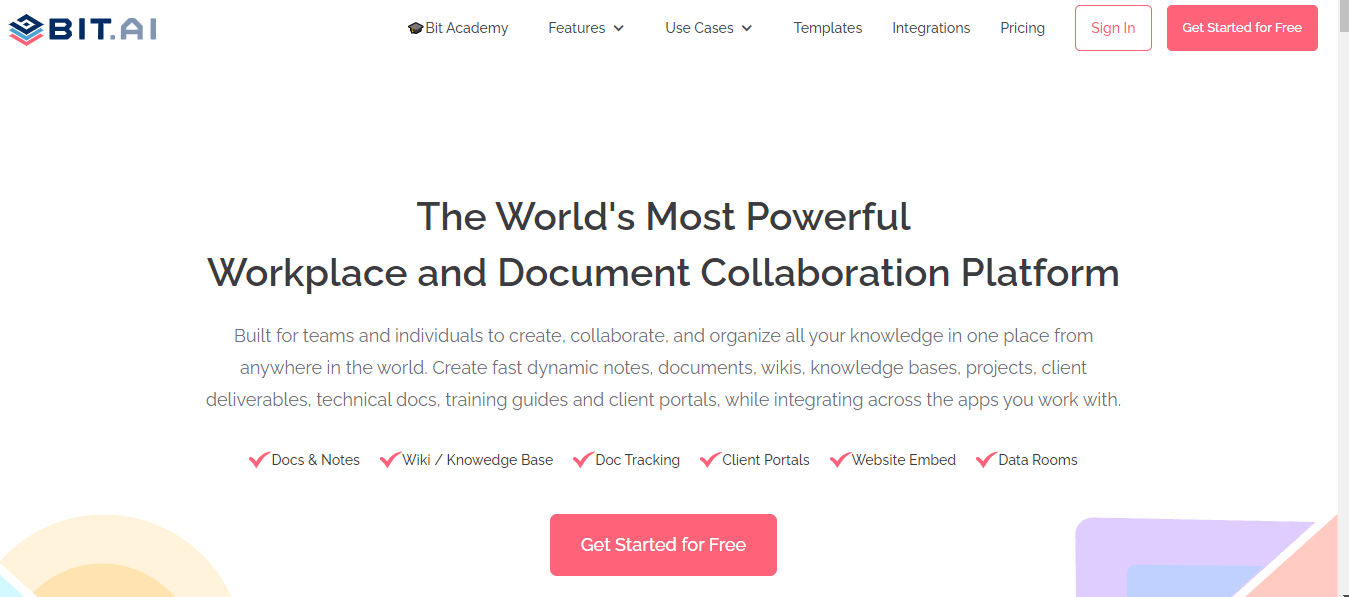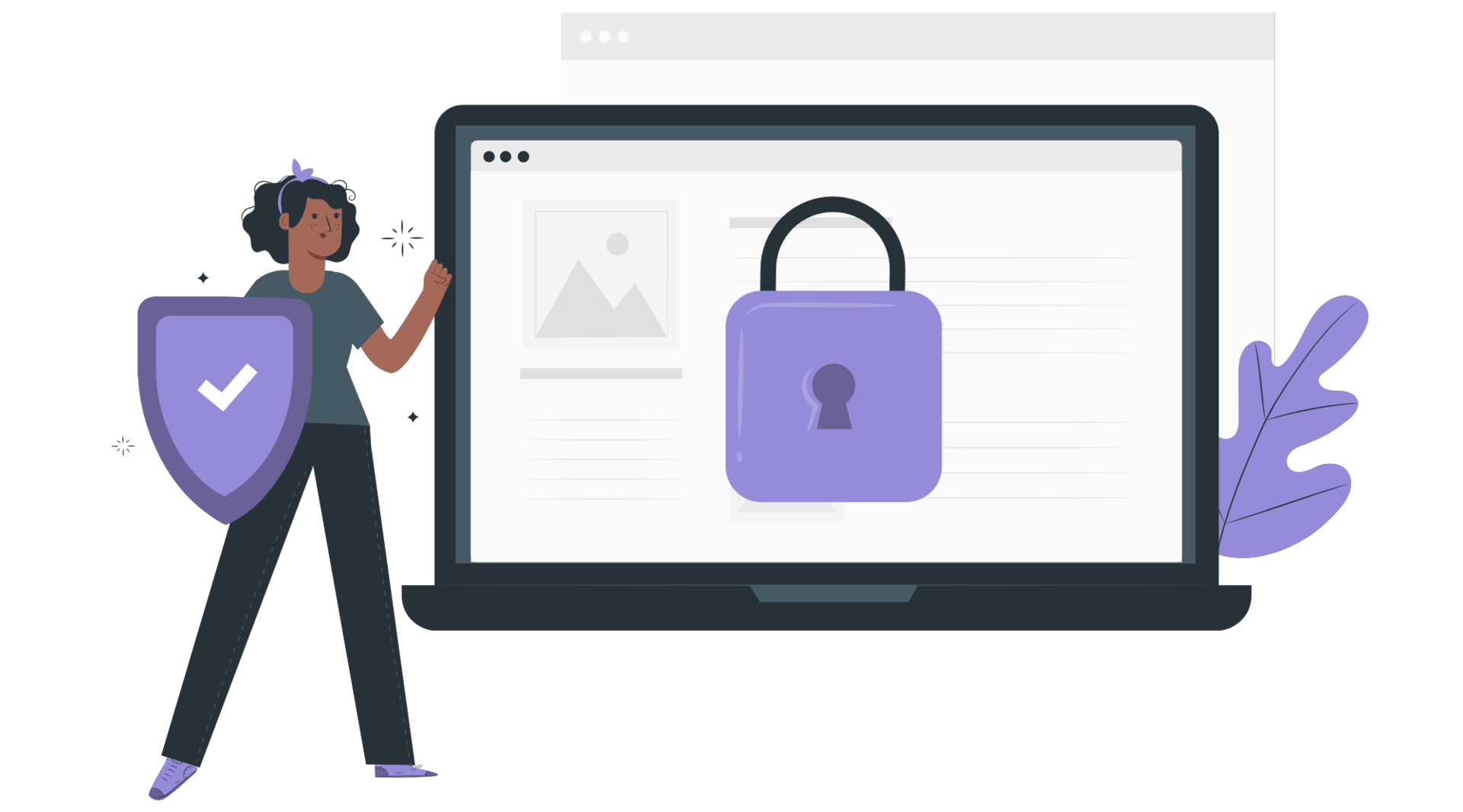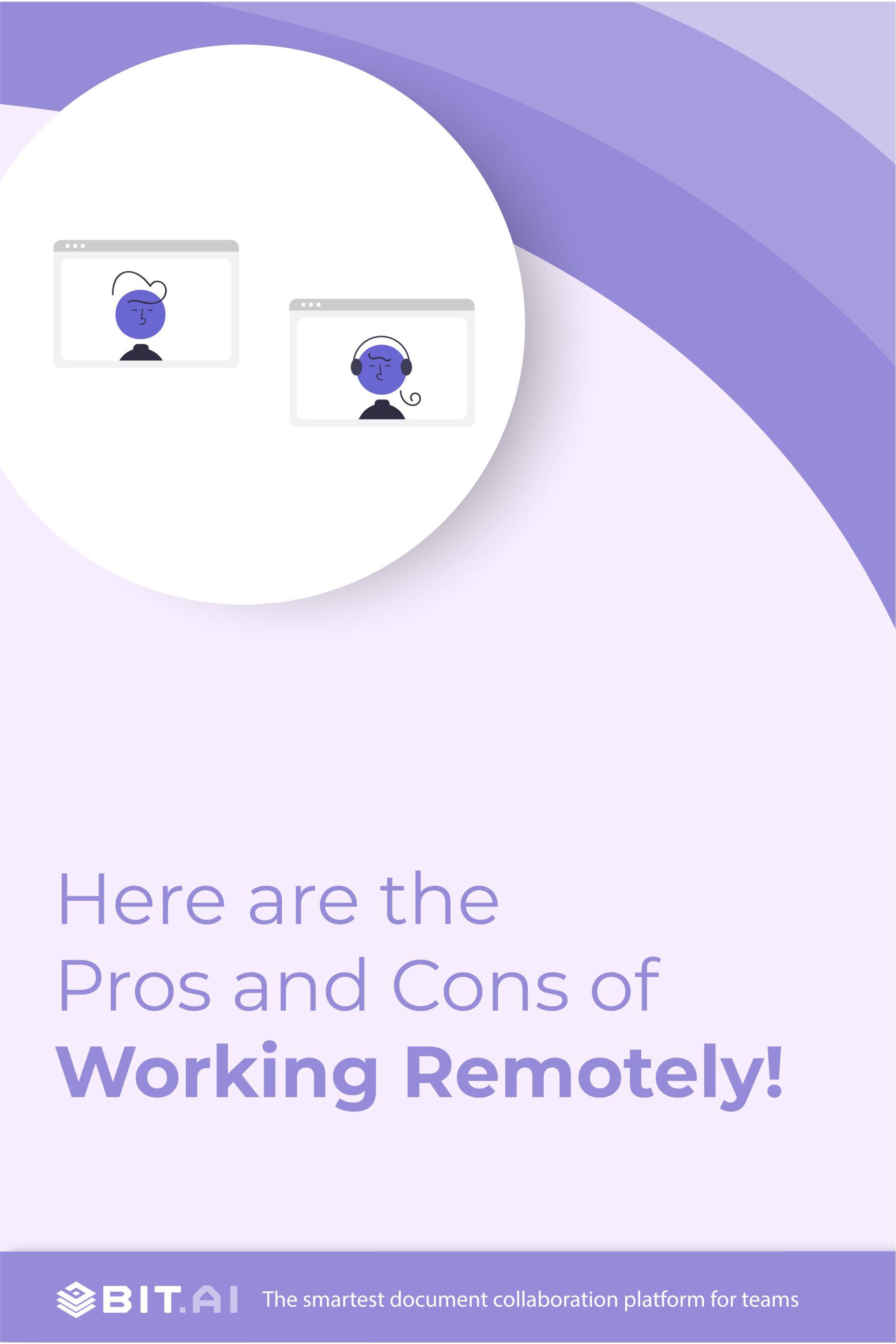Are you tired of the daily commute, office politics, and rigid schedules? Well, remote work may be the solution to all your problems! With the rise of technology and the pandemic-induced shift towards remote work, many people have been able to experience the benefits of working from home or anywhere in the world.
But before you jump on the bandwagon, it’s important to weigh the pros and cons of remote work. Will you be able to resist the temptation of Netflix during work hours, or will your furry coworkers keep interrupting your Zoom meetings?
In this blog, we’ll take a fun and engaging look at the pros and cons of remote work. We’ll explore the freedom, flexibility, and increased productivity that remote work can provide, but we’ll also discuss the potential challenges, such as isolation and the need for self-discipline.
So, whether you’re a digital nomad or a stay-at-home parent looking for a more flexible work arrangement, this blog is for you! So grab a cup of coffee (or your favorite beverage), sit back, and dive into the exciting world of remote work!
The Benefits of Working Remote
1. Work From Anywhere!
The flexibility of remote work can be a game-changer for many people. With the ability to work from anywhere in the world, you can travel while working or work from the comfort of your own home.
Imagine working on a beach with a Mai Tai in your hand or from the comfort of your own bed in your favorite pajamas. With remote work, the world is your oyster, and you can work wherever you feel the most productive.
The flexibility also extends to scheduling, allowing you to work during your most productive hours and take time off when needed. This level of autonomy can lead to a more balanced and fulfilling life, as you can tailor your work to your needs and preferences.
2. Enjoy Increased Autonomy and Freedom

Remote work offers a level of autonomy that traditional office jobs may not. Without a manager looking over your shoulder, you can take ownership of your work and manage your time and tasks as you see fit. This can lead to greater creativity, innovation, and job satisfaction. Additionally, remote work can promote a sense of trust between employees and employers, allowing for greater independence and responsibility.
3. No More Commuting Stress
Commuting to and from work can be one of the most stressful parts of the day, especially if you live in a densely populated area with heavy traffic. With remote work, you get to skip out on the daily commute and all the stress that comes with it.
No more traffic jams or crowded trains, just a leisurely stroll from your bed to your home office. This can also lead to a positive outlook on the day, as you’re not starting off with a stressful commute. Talk about a stress-free life!
4. Get Comfy at Home
Do you know what no one misses while they’re working from home? Pants. But jokes aside, getting ready for the office, fixing hair, and putting on make-up is hard work, not to mention time-consuming. There’s a reason everyone hates doing it every day.
With remote work, you can choose your outfit based on your personal comfort and style – and let’s face it, some days, that might mean something a little more casual! You can have fun with your fashion choices without as many virtual meetings on the schedule. So embrace those sweatpants, cozy hoodies, or funky t-shirts – make sure you still look presentable for any impromptu video calls!
5. Health-Related Perks
Remote work isn’t just about being able to work in your pajamas; it’s also about creating a workspace that works for YOU. If you have a disability like chronic back pain or a mental health condition, tailored remote work equipment and setups can make all the difference.
Picture this: your back pain disappears as you sink into your comfortable home office chair while the sun pours in through your nearby window, boosting your mood and energy levels. And if you tend to fidget or move around a lot during the day, no worries! You can dance, stretch, or do jumping jacks in your own space without worrying about distracting your coworkers.
6. Improved Work-Life Balance
The real jackpot from remote work comes from the improved work-life balance, allowing you to better integrate your personal and professional life. With more flexibility in your schedule and the ability to work from home, you have more time for the things that matter most – family, friends, and hobbies. This can lead to greater fulfillment and happiness, as you can enjoy life outside of work.
7. Save Money!
We can’t talk about remote working without mentioning the massive cost savings it allows. Think about all the money you save on transportation, work clothes, and other office expenses. It’s like winning the lottery! What’s more, for employers, remote work can save on overhead costs such as office space and utilities. This can lead to a more cost-effective and sustainable business model.
8. Positive Impact on the Environment

And if all that wasn’t enough, remote work also positively impacts the environment. By reducing carbon emissions and lowering the number of cars on the road, you’re doing your part to create a more sustainable future for all. By working from home, you’re also reducing energy consumption and waste associated with working in an office. Although it is worth mentioning that sustainability is not an automatic byproduct of remote working, however, it can be an intentional one if you put in the effort.
9. Wider Opportunities for Diversity and Inclusion
Remote work offers diverse and inclusive job opportunities by accommodating individuals who face barriers in traditional office environments, such as minorities who prefer working from home, women with caregiving responsibilities, people with disabilities or chronic health conditions, those who cannot afford childcare or transportation, and those who do not live near the company’s physical location.
Working from home can accommodate your needs and preferences, allowing you to thrive in your career without worrying about traditional office barriers. This can result in increased job satisfaction and a sense of belonging. You’ll be in good company too!
In short, the perks of working remotely vary and can greatly enhance your work-life balance, productivity, and overall job satisfaction. If you’re considering a move to remote work, the benefits are well worth the transition effort.
However, it would be unfair if we only talked about the perks of remote work alone while leaving out the drawbacks that come with it. After all, a coin has two sides, and we need to see able to both. So let’s take a look at a few drawbacks of working remotely.
The Drawbacks of Working Remote
1. Lack of Face-to-Face Interaction
One of the downsides of remote work is the lack of face-to-face interaction. And since human beings are social creatures, working remotely can lead to feelings of isolation and loneliness. Building and maintaining strong working relationships can be challenging when all communication is done virtually. Video conferencing can help alleviate this issue to some extent, but it can never fully replace the benefits of in-person interaction.
2. Difficulty Separating Work and Personal Life
Sure, remote work helps balance work and personal life, but often it also blurs the lines between the both. Without the clear separation of a physical office, it can be challenging to switch off from work mentally.
The difficulty of separating work and personal life, therefore, results in overworking and burnout. This can negatively impact your mental and physical health. To address this issue, it’s important to set clear boundaries between work and personal life, such as designating a specific workspace and setting specific work hours.
3. Technology Issues
With remote work, everyone heavily depends on technology so much that work doesn’t happen without it. Technical issues such as poor internet connectivity, power outages, and hardware malfunctions often lead to work disruption, thereby impacting productivity.
Working remotely may also require employees to invest in additional hardware or software to ensure they can work effectively from home. Technical difficulties can be frustrating and time-consuming, leading to lost productivity and missed deadlines.
4. Distractions. Distractions. Distractions.
From your furry friends who want to attend work calls with you to the Netflix series tempting you to watch ‘just one more episode’ to the household chores calling out to you, the distractions are many. And they’re all waiting in line to take turns in disrupting your work.
Without the structure of an office environment, staying focused and productive when working remotely can be challenging. To combat distractions, it’s important to create a designated workspace free from distractions and establish clear boundaries with family members or roommates.
5. Lack of Accountability
Without the ability to physically observe employees, managers may feel like they’re in the dark when assessing productivity and providing feedback. It’s like trying to judge a cooking competition without actually tasting any of the food. You can see what’s happening, but you’re missing a crucial piece of the puzzle. This lack of accountability can lead to lower productivity and less oversight.
6. Lack of Supervision
We talked about how managers will find it difficult to assess their employees when they are working remotely. Likewise, it also poses the problem of being unable to offer supervision or guidance to the employees. With remote workers left to steer their own wheels, it often becomes difficult for them to learn from their superiors and receive feedback and guidance. The newer employees will therefore struggle with onboarding and learning things quickly.
7. Reduced Collaboration
Collaborative work can be more challenging when employees do not work in the same location. Without the ability to meet in person, collaborate in real-time, and brainstorm ideas together, employees may struggle to work together effectively. Collaboration tools such as video conferencing, instant messaging, and shared project management platforms can help alleviate this issue.
Want to know about a super cool collaboration platform that can make work-from-home hassle-free? We present Bit.ai, an all-in-one knowledge management and document collaboration platform designed for the modern-day workplace. It helps create, collaborate, share, track, and manage information in one place.

With Bit, you can create multiple workspaces, folders, and documents around your work, projects, clients, departments, and more to store and manage everything you have efficiently and organize.
Bit allows you to brainstorm, collaborate with your team, and work together on your documents in real-time. You can co-edit, make inline comments, chat via document chat, @mentions, and much more! You can even invite your co-workers or managers and provide them editing access to receive comments or feedback. This allows team members to access the right documents at the right time.
What’s more? Bit.ai has a sleek editor, a robust content library, visually stunning templates, real-time notifications, and much more! All-in-all, Bit.ai is like a virtual office!
8. Cybersecurity Concerns
Cybersecurity threats are always looming over anyone using internet technology, so when a company decides to let their employees work from home, security becomes super important.

You can install antivirus software, firewalls, and VPNs for their employees’ home internet connections. But that’s not always foolproof, especially if employees work from places like coffee shops or use their personal devices to connect to the company network.
So, businesses must meet or exceed the expected security standards before going for remote work. This way, they can avoid any cybersecurity issues that might pop up.
9. Secrets Can Get Out
The possibility of confidentiality issues and breaches is something people tend to forget about while working remotely. Imagine someone accidentally hearing an important discussion or catching a glimpse of sensitive documents on an employee’s computer. Yikes! That’s why businesses need to remind everyone about the importance of keeping things on the down low. They might even want to think about limiting work to private spaces so there’s less chance of anything sneaky happening.
The Status of Remote Work in 2023
Remote work has become the new norm for many companies across the globe. The pandemic accelerated the adoption of remote work, and now, it’s hard to imagine going back to the traditional 9-to-5 office setup.
Technological advancements and the widespread availability of high-speed internet have made remote work more feasible. Companies have also realized the benefits of remote work, such as increased productivity, reduced costs, and improved work-life balance for employees.
As of 2023, many companies have shifted to a hybrid work model, which allows employees to work both in the office and remotely. This setup provides the best of both worlds. It allows employees to work from wherever they are most productive while allowing in-person collaboration and team building.
However, companies are also aware of the challenges of remote work, such as cybersecurity risks, communication barriers, and the potential for burnout. To address these challenges, businesses have invested in cybersecurity measures, provided training on effective communication, and encouraged employees to take breaks and maintain a healthy work-life balance.
Overall, remote work has become a permanent fixture in the world of work, and companies are constantly adapting to make the most of its benefits while mitigating its challenges.
We hope this blog helped you gain some insights! Thanks for reading! Adios, amigos!
Further Reads:
Farewell Messages For Co-Workers: Make The Last Goodbye Memorable!
Manage Remote Employees: Expert Tips to Keep Your Team Productive & Connected!
Work From Home Policy: What is it and How to Write One?
Happy & Collaborative Work Culture: 10 Effective Ways to Create it!
Remote Work Challenges and How To Overcome Them Like a Pro?
Remote Employee Onboarding Checklist and Best Practises!
Maximize Your Potential With Productivity Software: A Comprehensive Guide
21 Remote Work Tools & Apps For Productive Employees!

Related posts
Bit.ai | Watch to Learn More
What is Bit.ai?
Bit.ai is an innovative AI-driven knowledge and Document Managment suite designed to empower knowledge workers by streamlining the creation of, documents, wikis, and notes. With an intuitive interface and seamless integration, Bit.ai acts as a versatile assistant to help you collaborate, generate, organize, and visualize your ideas effortlessly. Whether you are drafting a report, managing a project, collaborating with your team or clients, or brainstorming new concepts, Bit.ai brings intelligence and creativity to every aspect of your work process.


